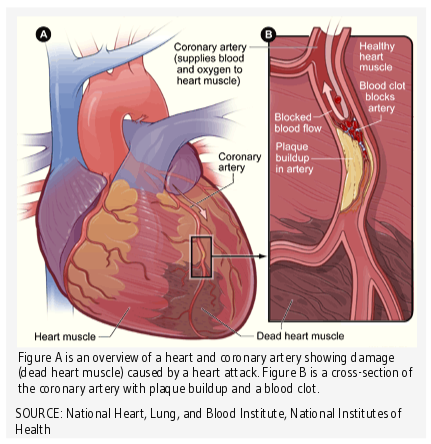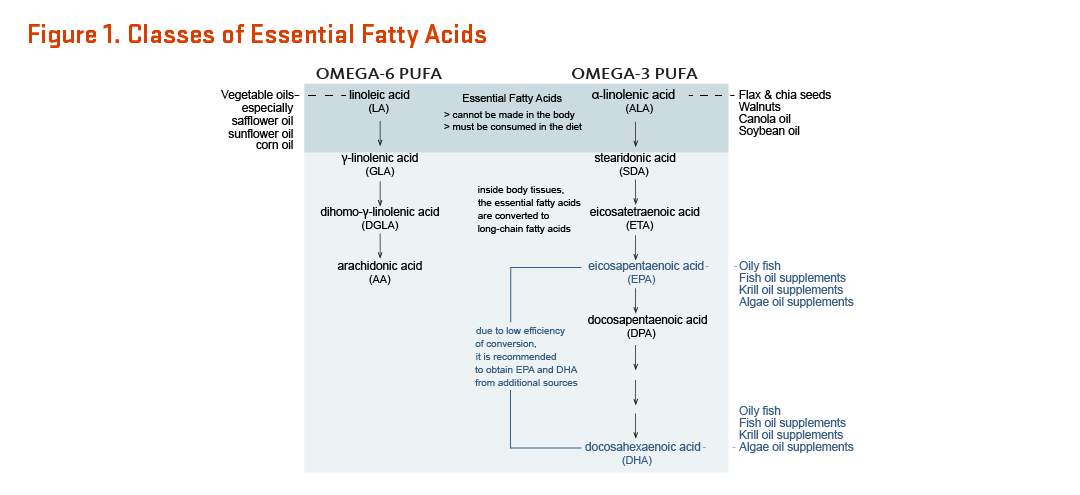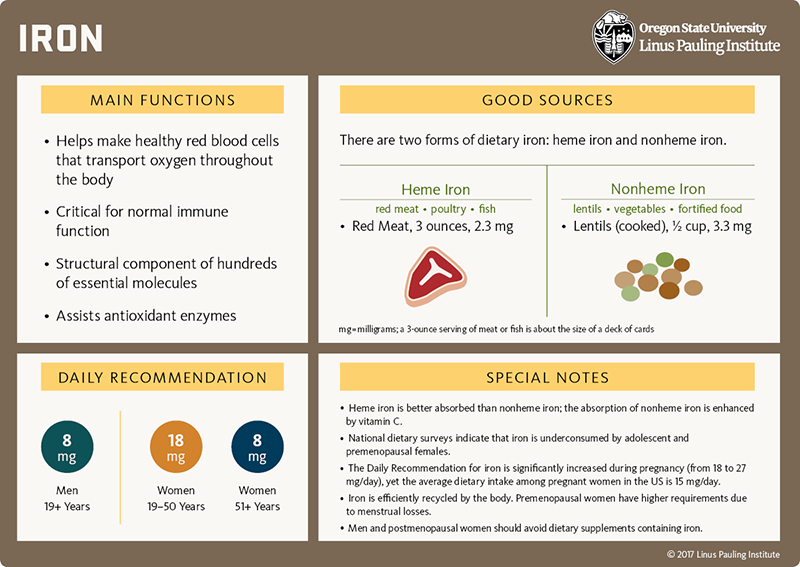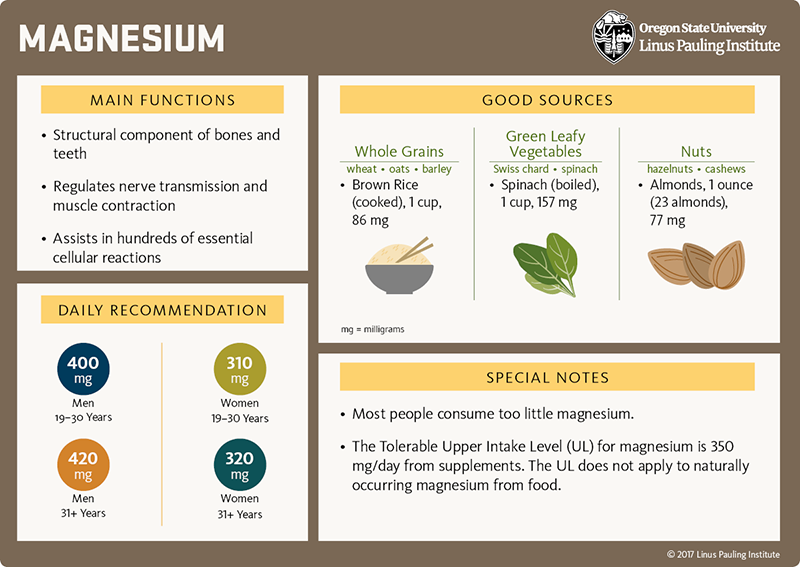Nutrition Research
-
Macronutrients
-
Micronutrients
-
Dietary Factors
-
Food & Beverages
 Summary
Summary
Coronary Heart Disease (CHD) is a leading cause of heart attack and death worldwide. Consumption of nuts, legumes, phytosterols, whole grains, moderate amounts of alcoholic beverages, food rich in long-chain omega-3 polyunsaturated fatty acids, magnesium, vitamin C, fiber, and flavonoids has been associated with a reduced risk of CHD. Additionally, there is some evidence that essential fatty acids may affect the reoccurrence of heart attack in patients with established CHD. Strategies to prevent or slow the progression of endothelial dysfunction and atherosclerosis may help prevent the development of CHD.
Disease Overview
Coronary heart disease (CHD) results from coronary artery disease (CAD) — atherosclerosis inside the small blood vessels that supply blood to the heart. Although CHD technically follows coronary artery disease (CAD), the two terms are often used interchangeably.
CHD is a leading cause of heart attack and death in both men and women in the US and worldwide. A heart attack can occur during CHD when: (1) a plaque in a coronary artery is so large that it blocks blood flow to the heart, or (2) an unstable plaque ruptures and a piece of plaque or resulting blood clot blocks the flow of blood to the heart. Sudden cardiac death (SCD), the result of a fatal arrhythmia, is also a major cause of death in individuals with CHD.
See below for specific information about nutrients and dietary factors relevant to coronary heart disease.
DEFINITIONS
Coronary - referring to the heart and especially the vessels that supply blood to the heart
Atherosclerosis - the buildup of plaque inside arterial walls
Plaque - a deposit of fat, cholesterol, immune cells, fibrin (a blood clotting protein), and other substances that forms inside arterial walls; over time, plaque increases in size, hardens, and can obstruct blood flow through an artery
Nutrition Research
DEFINITIONS
Test tube (in vitro) experiment - a research experiment performed in a test tube, culture dish, or other artificial environment outside of a living organism; in vitro is a Latin phrase meaning in glass
Animal experiment - a research experiment performed in a laboratory animal; many different animal species are studied in the laboratory, including terrestrial (land), aquatic (water), and microscopic animals
Observational study - a human research study in which no experimental intervention or treatment is applied, and participants are simply observed over time
Randomized controlled trial - a human research study in which participants are assigned by chance alone to receive either an experimental agent (the treatment group) or a placebo (the control group)
Placebo - a chemically inactive substance
Essential Fatty Acids
What they do
General
-
Essential fatty acids are a type of polyunsaturated fatty acid (PUFA). PUFAs have several double bonds in their structure that give them complex shapes and influence their function.
-
Essential fatty acids are structural components of every cell in the body, are converted to compounds that influence inflammation and immunity, and serve as an important source of energy.
-
There are two classes of essential fatty acids: omega-6 PUFA and omega-3 PUFA.
Coronary Heart Disease (CHD)-specific
-
The omega-6 PUFA, linoleic acid, is the most effective essential fatty acid for reducing blood cholesterol concentration.
What we know
-
Replacing saturated fat with a mixture of omega-6 and omega-3 PUFA is associated with a significant reduction in total cholesterol, but clinical trials have failed to find a reduction in the risk of cardiovascular events.
-
Fish and other seafood are the main food sources of long-chain omega-3 PUFA. Consumption of even one serving of fish per week help lower risk of fatal CHD in those with existing CHD.
-
Findings from randomized controlled trials suggest no effect of omega-3 PUFA (either supplemented, enriched in meals, or advised to be consumed) on the risk CHD events.
-
There is some evidence that supplementation with long-chain omega-3 PUFA in patients with prior clinical CHD might reduce the risk of CHD death, possibly because of a reduction in the risk of ischemia-induced sudden cardiac death.
DEFINITION
Ischemia - inadequate blood supply to an organ or tissue
For references and more information, see the section on cardiovascular disease in the Essential Fatty Acids article.

[Click to Enlarge]

Fiber
What it does
General
-
Fiber is a general term for carbohydrates that are resistant to digestion by human enzymes.
-
Fiber is considered an essential nutrient; it can be obtained from food, additives, and dietary supplements.
-
As fiber travels through the digestive tract, its physical properties (which vary depending on the type of fiber ingested) impart different health effects.
-
Beneficial health effects associated with fiber consumption include: satiety, gastrointestinal health, colonic health, and cardiovascular health.
Coronary Heart Disease (CHD)-specific
-
Fiber may benefit cardiovascular health by decreasing serum cholesterol, influencing blood glucose and the insulin response, and lowering blood pressure.
-
Additionally, fiber-rich foods may provide other nutrients, such as magnesium and potassium, that benefit the cardiovascular system by helping to reduce blood pressure.
What we know
-
Observational studies consistently find that high intakes of fiber-rich foods are associated with a significant reduction in CHD risk and cardiovascular-related mortality.
For references and more information, see the section cardiovascular disease in the Fiber article.

Iron
What it does
General
-
Iron, an essential mineral, is required for the synthesis of hundreds of essential molecules, facilitates oxygen transport and storage, and assists antioxidant enzymes.
-
Iron is transported in the blood inside a protein called transferrin.
-
Dietary iron is found in two forms: heme and non-heme iron. Heme iron comes mainly from meat, poultry, and seafood. Non-heme iron is found in plants, dairy products, meat, fortified food, and dietary supplements.
Coronary Heart Disease (CHD)-specific
-
Animal studies suggest a role for iron-induced oxidative stress in the development of atherosclerosis. However, the role of iron in cardiovascular disease in humans is not yet known.
What we know
-
High dietary intake of heme iron has been associated with an increased risk of CHD. Heme iron consumption is often associated with red meat consumption; thus, it is unclear if heme iron itself or other factors that accompany its intake are responsible for the increased risk of CHD.
-
Observational studies have found that higher transferrin saturation (a measure of circulating iron available for tissue distribution) is associated with a reduced risk of CHD. However, blood markers of iron status are influenced by inflammation and other disease states, thus the relationship between transferrin saturation and CHD risk requires further clarification.
For references and more information, see the section on cardiovascular disease in the Iron article.

[Download PDF]

Magnesium
What it does
General
-
Magnesium is an essential mineral that serves as a structural component of the skeleton; assists in hundreds of enzymatic reactions involved in the synthesis of energy, DNA, and proteins; and is required for proper nerve conduction and muscle contraction.
Coronary Heart Disease (CHD)-specific
-
Hypertension is a major risk factor for the development of atherosclerosis and CHD. Higher dietary intake of magnesium is associated with lower blood pressure.
What we know
-
Several large, observational studies indicate that higher dietary intakes of magnesium are associated with a reduced risk for CHD.
For references and more information, see the section on cardiovascular disease in the Magnesium article.

[Download PDF]

Vitamin C
What it does
General
-
Vitamin C neutralizes a variety of reactive oxygen species and recycles important cellular antioxidants.
-
Vitamin C is also a cofactor in numerous enzymatic reactions involved in the making of collagen, L-carnitine, and several neurotransmitters, and in the regulation of gene expression.
Coronary Heart Disease (CHD)-specific
What we know
-
The majority of observational studies report an inverse association between vitamin C intake and CHD risk. In other words, the higher the vitamin C intake, the lower the risk of CHD.
DEFINITIONS
Reactive oxygen species (ROS) - highly unstable oxygen-containing compounds that react easily with nearby cellular structures, potentially causing damage
Antioxidants - compounds that prevent or repair the damage caused by reactive oxygen species
Oxidative stress - a situation in which the production of reactive oxygen species exceeds the ability of an organism to eliminate or neutralize them
Inverse association - a relationship between two variables in which they move in opposite directions
For references and more information, see the section on cardiovascular disease in the Vitamin C article.

[Download PDF]

Flavonoids
What they do
General
-
Flavonoids are a type of phytochemical (a chemical produced by plants) that belong to a class of compounds called phenolics.
-
More than 5,000 varieties of flavonoids have been identified and hundreds of flavonoids can exist in a single food.
-
Many of the biological effects of flavonoids are related to their ability to modulate signaling pathways inside of cells.
Coronary Heart Disease (CHD)-specific
-
Inside endothelial cells (the cells that make up the lining of blood vessels), certain flavonoids may increase the production of nitric oxide, a gaseous molecule that promotes relaxation of arterial walls.
-
By improving endothelial cell function, flavonoids may help reduce the risk of progressing to more serious cardiovascular conditions, like atherosclerosis and CHD.
What we know
-
Consuming flavonoid-rich food and beverages has been associated with a reduced risk of CHD.
-
Several randomized controlled trials have demonstrated that habitual consumption of certain flavonoid-rich beverages (black tea, purple grape juice, and high-flavanol cocoa powder) improves endothelial function in patients with CHD, elevated blood cholesterol, or type 2 diabetes.
For references and more information, see the section on cardiovascular disease in the Flavonoids article.

Phytosterols
What they do
General
-
Phytosterols are a group of plant-derived compounds that are similar in structure to cholesterol.
-
The two types of phytosterols are called plant sterols and plant stanols.
-
Foods rich in phytosterols include unrefined vegetable oils, whole grains, nuts, and legumes; enriched spreads are also a source of phytosterols.
Coronary Heart Disease (CHD)-specific
-
Phytosterols inhibit the absorption of dietary cholesterol.
What we know
-
Numerous randomized controlled trials have found that daily consumption of products enriched with plant sterols or plant stanols significantly lowers serum total- and LDL-cholesterol concentrations.
-
Approximately two grams of phytosterols per day reduces serum cholesterol by approximately 9 to 14 percent.
-
Due to their cholesterol-lowering effect, the addition of phytosterols to a heart-healthy diet (low in saturated fat and rich in fruit and vegetables, whole grains, and fiber) could further reduce the risk of CHD.
For references and more information, see the section on cardiovascular disease in the Phytosterols article.

Resveratrol
What it does
General
-
Resveratrol is a phytochemical (a chemical produced by plants) that belongs to a class of compounds called stilbenes.
-
Some plants produce resveratrol to protect themselves from UV radiation, infection, injury, and other forms of environmental stress.
-
Resveratrol is naturally found in peanuts, grapes, red wine, and some berries.
Coronary Heart Disease (CHD)-specific
-
Test tube experiments demonstrate that high concentrations of pure resveratrol inhibit platelet aggregation, enhance the production of nitric oxide (a gaseous molecule that relaxes arterial walls), and inhibit inflammatory enzymes.
What we know
-
In humans, orally ingested resveratrol is modified by the digestive tract, greatly reducing the dose and modifying the form of resveratrol that reaches the circulation.
-
The presence of resveratrol in red wine was initially thought to be responsible for red wine’s beneficial cardiovascular effects. However, there is no evidence that resveratrol confers any reduction in CHD risk beyond that provided by the alcohol present in red wine.
DEFINITION
Platelet aggregation - the clumping together of platelets, a type of blood cell; an early step in the formation of a blood clot
For references and more information, see the section on cardiovascular disease in the Resveratrol article.

Alcoholic Beverages
What they do
General
-
Alcoholic beverages contain ethanol and other ingredients with bioactive properties that may benefit health.
-
When consumed in moderation (no more than two drinks per day for men and one drink per day for women), alcoholic beverages have been associated with beneficial effects in the cardiovascular system.
Coronary Heart Disease (CHD)-specific
-
Moderate alcohol consumption appears to:
-
inhibit blood clot formation
-
increase HDL-cholesterol concentration
-
improve insulin sensitivity
-
exert anti-inflammatory effects
What we know
-
Moderate alcohol consumption is consistently associated with a reduced risk of CHD.
For references and more information, see the section on Potential Health Benefits of Moderate Alcohol Consumption in the Alcoholic Beverages article.

Coffee
What it does
General
-
Coffee is a complex mixture of chemicals. In addition to caffeine, coffee contains several bioactive compounds that can influence human health.
Coronary Heart Disease (CHD)-specific
-
Higher coffee intake has been associated with higher blood homocysteine concentration, a risk factor for the development of cardiovascular disease.
What we know
-
Randomized controlled trials have confirmed the homocysteine-raising effect of coffee at intakes of about four cups per day.
-
Although coffee consumption increases blood homocysteine concentration, there appears to be no significant association between moderate coffee consumption (three to four cups/day) and the risk of CHD.
For references and more information, see the section on cardiovascular disease in the Coffee article.
Additional reference
-
Eilat-Adar S, et al., Nutritional Recommendations for Cardiovascular Disease Prevention. Nutrients. 2013;5:3546-3683

Legumes
What they do
General
-
Foods in the legume family include beans, peas, lentils, soybeans, and peanuts.
-
Legumes are a good source of protein, essential minerals (magnesium, potassium, iron, zinc), vitamins (folate, niacin, riboflavin, vitamin B6), soluble fiber, and phytochemicals.
Coronary Heart Disease (CHD)-specific
-
Legumes may benefit cardiovascular health by decreasing serum cholesterol concentration and by improving blood glucose and the insulin response.
-
Substituting legumes for foods high in saturated fat and refined sugar may also benefit cardiac health.
What we know
-
Consumption of lentils at least four servings of legumes per week is associated with a significantly reduced risk of CHD.
-
Regular intake of legumes, both pulses (legumes excluding green peas, green beans, peanuts, and soybeans) and soy food, may result in favorable changes to LDL-cholesterol and other blood lipids.
For references and more information, see the section on cardiovascular disease in the Legumes article.

Nuts
What they do
General
-
Nuts are a good source of soluble fiber, phytosterols, mono- and polyunsaturated fatty acids, protein, certain vitamins (folate, vitamin E), and minerals (calcium, magnesium, potassium).
-
Examples of tree nuts include almonds, Brazil nuts, cashews, hazelnuts, macadamia nuts, pecans, pistachios, and walnuts.
-
Peanuts are not nuts; they are legumes. However, peanuts are nutritionally similar to tree nuts and have some of the same beneficial health effects.
Coronary Heart Disease (CHD)-specific
-
The soluble fibers and phytosterols present in nuts and peanuts inhibit intestinal absorption of dietary cholesterol, which can lead to reductions in serum total- and LDL-cholesterol.
-
α-Linolenic acid, an omega-3 fatty acid present in nuts and peanuts, may exert anti-arrhythmic effects.
-
Substituting dietary saturated fat with unsaturated fat lowers LDL-cholesterol and decreases cardiovascular disease risk.
What we know
-
Regular nut consumption (one ounce at least five times per week) is associated with a significantly lower risk of developing or dying from CHD.
-
Numerous randomized controlled trials demonstrate that adding nuts (one to two ounces daily) to a diet that is low in saturated fat results in significant reductions in serum total- and LDL-cholesterol concentrations in people with normal or elevated serum cholesterol.
-
A large randomized controlled trial conducted in Spain, the PREDIMED Trial, tested the effect of supplementation with olive oil or nuts on the prevention of cardiovascular events in high-risk individuals eating a Mediterranean diet.
-
Supplementation with olive oil (four tablespoons per day) or mixed nuts (approximately one ounce of walnuts, hazelnuts, and almonds per day) for about five years resulted in a significant, 30 percent reduction in the risk of major cardiovascular events (heart attack, stroke, and cardiovascular death).
HIGHLIGHT
-
Nuts are packed with healthy fat and, therefore, calories.
-
One ounce (28 grams) of nuts contains approximately 160 calories and 14 to 19 grams of fat (mainly mono- and polyunsaturated fatty acids).
-
One ounce of nuts equals approximately 24 almonds, 8 medium Brazil nuts*, 18 medium cashews, 12 hazelnuts, 12 macadamia nuts, 15 pecan halves, 47 pistachios, 14 walnut halves, or 35 peanuts.
-
It is recommended to substitute nuts for sources of saturated fat.
*Depending on growth conditions, a single Brazil nut could contain exceedingly high levels of selenium.
DEFINITION
The traditional Mediterranean diet is characterized by:
-
high intake of olive oil, fruit, nuts, vegetables, and cereals
-
moderate intake of fish and poultry
-
low intake of dairy products, red meat, processed meats, and sweets
-
wine in moderation, consumed with meals
For references and more information, see the section on cardiovascular disease in the Nuts article.
Additional reference
-
Estuch R, et al. Primary Prevention of Cardiovascular Disease with a Mediterranean Diet. New England Journal of Medicine. 2013;368(14):1279-90

Whole Grains
What they do
General
-
Whole grains are the seeds of plants belonging to the grass family, which includes wheat, rice, maize (corn), barley, oats, and rye.
-
Whole grain products contain all three layers of the seed: bran, endosperm, and germ.
-
In contrast to whole grains, refined grains are stripped of the bran and germ layers. Some essential nutrients (thiamin, riboflavin, niacin, iron) are added back to the grain after the refining process, producing what is known as an “enriched grain.”
Coronary Heart Disease (CHD)-specific
-
Whole grains contain several nutrients and dietary factors that are associated with CHD risk reduction:
-
whole grains are a source of folate, magnesium, and potassium
-
the soluble fiber present in certain whole grains (oats, barley) contributes to a reduction in total- and LDL-cholesterol
-
whole grains are a source of phytosterols, plant chemicals that interfere with the intestinal absorption of cholesterol
-
consumption of fiber-rich whole grains decreases dietary glycemic load, leading to slower absorption of glucose and a more sustained blood insulin concentration
What we know
-
Higher intake of whole grains (about three servings per day) is associated with significant reductions in the risk of CHD and ischemic stroke.
For references and more information, see the section on cardiovascular disease in the Whole Grains article.

 Summary
Summary